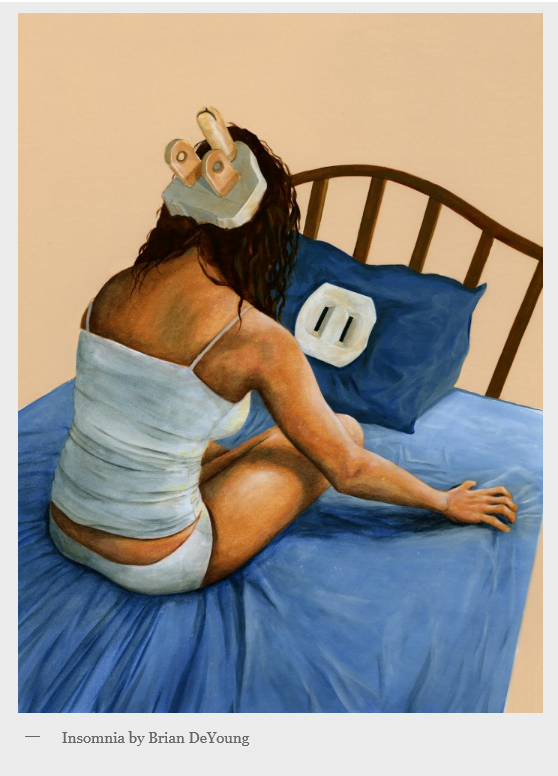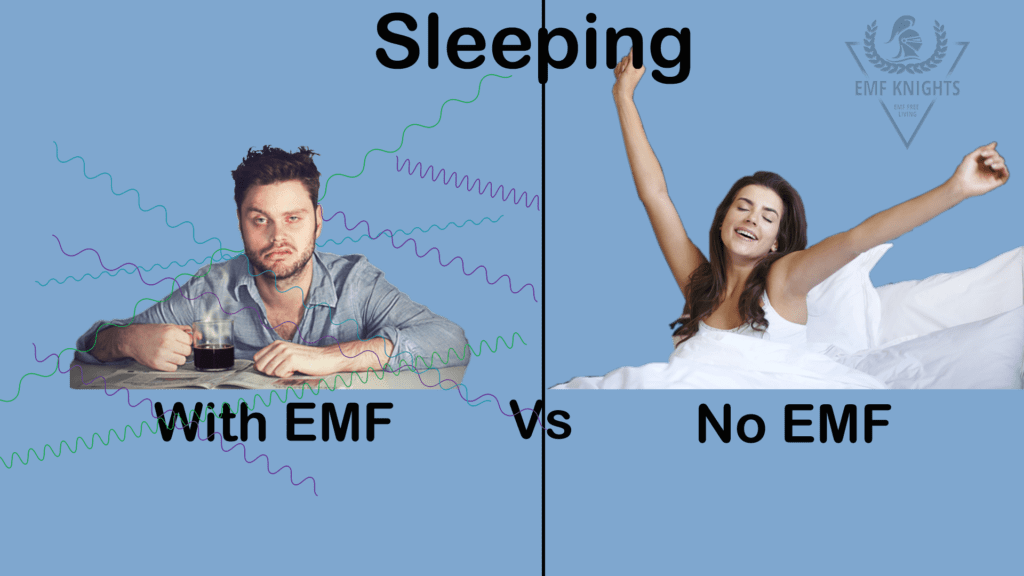Role of EMF exposure and Insomnia as a direct consequence

Sleep is a cornerstone of human health, essential for physical, cognitive, and emotional well-being. However, in today’s tech-driven world, the prevalence of electromagnetic fields (EMF) from electronic devices has raised concerns about their potential impact on sleep quality. While the debate on EMF’s health effects persists, emerging research suggests a compelling link between long-term EMF exposure in sleeping locations and insomnia. Understanding this connection is crucial for promoting better sleep hygiene and mitigating potential risks to public health.
Insomnia, characterized by difficulty falling asleep or staying asleep, affects millions of individuals worldwide and can have profound consequences on daily functioning and overall health. While various factors contribute to insomnia, recent studies have shed light on the role of EMF in disrupting sleep patterns.
EMF emanates from a myriad of sources, including Wi-Fi routers, cell phones, laptops, smart meters, and electrical wiring. These ubiquitous sources of EMF create an invisible web of radiation that permeates our living spaces, including bedrooms, where individuals spend a significant portion of their time sleeping.
The body’s circadian rhythm, governed by the internal clock, regulates the sleep-wake cycle and is highly sensitive to environmental cues, including light and electromagnetic signals. Exposure to EMF during sleep can interfere with the production of melatonin, the hormone responsible for regulating sleep, leading to disruptions in the sleep-wake cycle and difficulty achieving restorative sleep.
Moreover, studies have suggested that EMF exposure may alter brainwave patterns during sleep, resulting in shallower sleep stages and reduced sleep efficiency. Prolonged exposure to EMF in sleeping environments has been associated with increased sleep latency, frequent awakenings during the night, and decreased overall sleep duration.
The impact of EMF on sleep quality is particularly concerning given the widespread adoption of electronic devices and wireless technologies in modern society. Many individuals unknowingly expose themselves to EMF emissions throughout the night, whether from bedside gadgets, adjacent electrical wiring, or nearby electronic devices.
Furthermore, certain populations may be more vulnerable to the effects of EMF on sleep. Children, whose developing bodies are more susceptible to environmental stressors, and individuals with preexisting sleep disorders or neurological conditions may be at increased risk of experiencing insomnia due to EMF exposure.
Addressing the issue of EMF-induced insomnia requires a multifaceted approach involving both individual behavior changes and societal interventions. Realizing the importance of creating sleep-friendly environments, individuals can take proactive steps to minimize EMF exposure in their bedrooms by:
- Creating a Technology-Free Zone: Designate the bedroom as a sanctuary for sleep by removing electronic devices, such as smartphones, tablets, and laptops, from the sleeping environment.
- Limiting Wireless Technologies: Turn off Wi-Fi routers and other wireless devices during sleep hours to reduce EMF emissions in the bedroom.
- Optimizing Bedroom Layout: Position beds away from electrical outlets, wiring, and electronic appliances to minimize proximity to sources of EMF.
- Investing in EMF Shielding: Consider utilizing EMF shielding materials, such as special paints or fabrics, to create a barrier against electromagnetic radiation in the bedroom.
- Prioritizing Sleep Hygiene: Establish a bedtime routine that promotes relaxation and prepares the body for sleep, including minimizing screen time before bed and creating a comfortable sleep environment.

On a broader scale, policymakers and public health authorities have a responsibility to address the potential health risks associated with EMF exposure and implement regulations and guidelines to protect public health. This may include conducting further research into the effects of EMF on sleep quality, raising awareness among healthcare professionals and the general public, and establishing exposure limits for EMF-emitting devices.
In conclusion, insomnia as a consequence of long-term EMF exposure in sleeping locations represents a significant public health concern with far-reaching implications. By understanding the connection between EMF and sleep disturbances and taking proactive measures to minimize exposure, individuals can promote better sleep hygiene and support overall health and well-being. Moreover, concerted efforts at the societal level are necessary to address this emerging health issue and ensure that sleep environments remain conducive to restorative sleep for all.